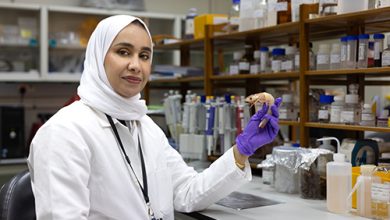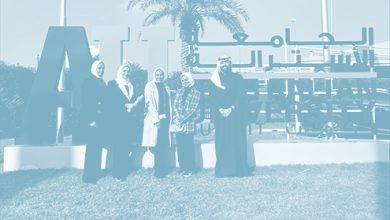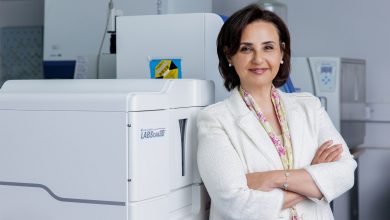Kuwaiti Scientist Pioneers Use of Ultrasound Waves in Neuroimaging
Inspired by the spirit of scientific innovation in Boston, Kuwaiti neuroscientist Shaikhah Alshuaib wanted to shape the future of neuroimaging. Funding from the Kuwait Foundation for the Advancement of Sciences helped her do it
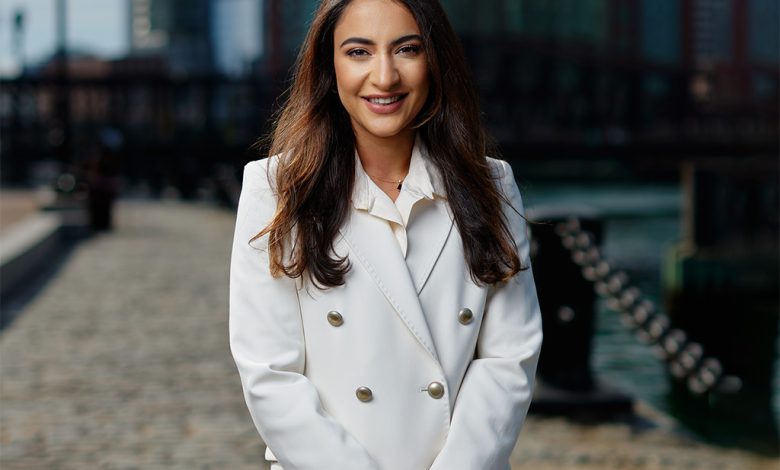
Shaikhah Alshuaib moved to Boston when she was 17 to earn a bachelor’s degree from Boston University. She had a scholarship from Kuwait’s Ministry of Education and planned to pursue a pre-med track and then a career in dentistry. But she soon fell in love with research, working in a lab, and trying to understand the most complex inner workings of the human brain.
“I got really interested in learning more about the sciences,” she said. With help from mentors and advisors, Alshuaib changed the focus of her undergraduate degree to neurobiology so that she could pursue a career in neuroscience research. “I loved neuroscience [and] I realized that I needed to do something that I was passionate about,” she said.
Now, she is working on a neuroimaging-based Ph.D. research project with significant implications for the future of medicine and our understanding of the human brain.
Before moving to Boston, Alshuaib said she knew relatively little about research-based careers and hadn’t dreamed of earning a Ph.D. in neuroscience. “I think in Kuwait, sometimes, the social culture doesn’t embrace scientists and embrace what we do,” she said. That makes it difficult for young people in Kuwait to discover and explore career paths in the sciences. “That was the biggest obstacle for me,” said Alshuaib. “If I had access to labs and research and scientists that I could relate to, I think I would have done this a lot earlier.”
The New England city is a historical haven of scientific innovation, especially for neuroscience. “It was the city where neuroscience in the United States happened, it was where the first experiments were done,” said Alshuaib.
Many famous neuroscientists, including Stephen W. Kuffler, known as the “Father of Modern Neuroscience,” once called Boston home and carried out cutting-edge experiments in labs at local universities like Harvard University and Boston University. Their legacies have helped ensure the city remains a hub for neuroscience research today. Alshuaib said that made it “easy for me to see what neuroscience was from a theoretical perspective, and the lab was accessible, and the culture around it was welcoming.”
This culture allowed her to undertake a series of internships in various environments while she studied for her B.A. in biology with a specialization in neurobiology and then an M.A. in neurobiology, which she completed in 2019. One of her first neuroscience internships was in a clinical research environment at the Vision and Cognition Lab at Boston University, working with patients with Parkinson’s Disease, a progressive disorder that affects the nervous system.
But Alshuaib soon found that she enjoyed working in a wet lab more than working with patients in a clinical setting. A wet lab is a lab equipped with plumbing, ventilation, and equipment that allows for hands-on scientific research and experimentation, like the Membrane Biophysics Lab at Boston University, where Alshuaib now works. She said she prefers the wet lab environment because it allows for greater experimentation with fewer ethical considerations. Whereas in a clinical setting, she worked with living patients, Alshuaib now works with samples of various animal brains in the lab.
Her current Ph.D. project involves testing ultrasound technology on various animal models to understand how ultrasound affects neurons and the neural membrane and how neurons communicate with one another. The project was made possible, in part, thanks to funding from the Kuwait Foundation for the Advancement of Sciences (KFAS).
When she decided she wanted to continue her research beyond the completion of her M.A., funding was a significant concern. She applied for funding from KFAS in Spring 2020 and was selected for a grant.
Alshuaib said she and her advisors, Dr. Jen-wei Lin at Boston University and Dr. Yoshio Okada at Harvard Medical School, spent the interim period “troubleshooting and putting all the pieces together.” She learned a lot during this period. The world seemed to slow down due to COVID lockdowns, but Alshuaib still had access to the lab and unprecedented access to Lin and Okada, whose schedules were less busy than usual. “I learned things that I never thought I would,” she said.
In September 2020, when the news came that KFAS would help fund their project, the team was ready to secure the final materials and equipment they needed to carry out their experiments and start collecting data right away.
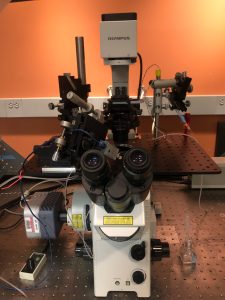
With the final round of experiments almost complete, Alshuaib is now looking ahead to writing and publishing her results over the next two years. She anticipates having a first publication released sometime next summer. As she begins to compile her results and reflects on the project, Alshuaib is thankful for the recognition and support provided by KFAS.
“The level of freedom that we had because we had the funds was amazing,” she said. “I learned so much in these past two years.”
By Marianne Dhenin

